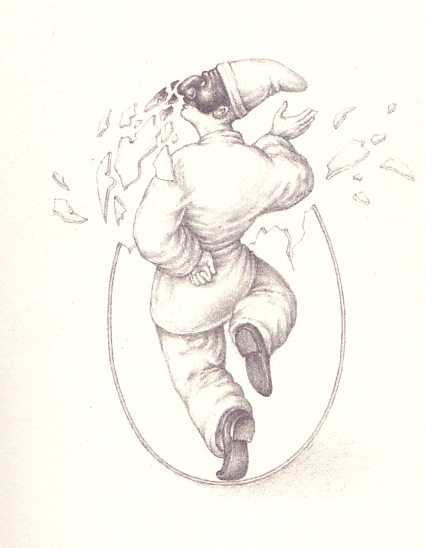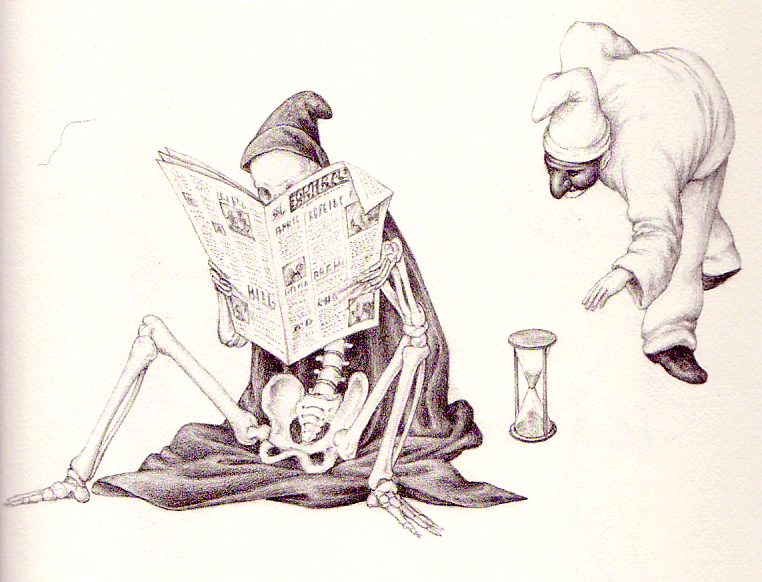Luigi Serafini
Luigi Serafini
Pulcinellopedia Piccola - 1984
Pulcinellopedia Piccola by Luigi Serafini and Polecenella Cetrulo (unsigned). Milan: Longanesi, 1984. Quarto (approx. 9.5″ x 12.5″). 127 pp. (unnumbered). Text in Italian. Over 60 illustrations. Near fine condition lacking the original half-slipcase, with only very slight darkening to the upper half of the cover, as is common with this book. Limited edition of just 5000 copies were published.
This is the very scarce second book by artist, architect, and designer Luigi Serafini, creator of the surreal cult classic Codex Seraphinianus, a high point of 20th-century book illustration. The Pulcinellopedia is divided into nine scenes and features the character of Pulcinella or Punch, a stock figure of 17th-century commedia dell’arte and later puppetry.
This beautiful, thought-provoking book comprises dozens of pencil illustrations, monochrome for the most part, beginning with a puppet-show depicted comic-strip style. After a couple of brief texts, the body of the book begins: a ‘suite’ in nine sections, some comprising many illustrations, others with just one. Anyone familiar with the Codex Seraphinianus will feel on familiar ground here, both with regard to the style of the illustrations, and to the sense of bafflement they provoke.
The origin of ‘Pulcinella’ (Mr. Punch) is lost in time, but is most likely derived from the character Zanni, the servant, the ignorant but canny peasant of the Commedia dell’Arte, whose long nose alludes to his vivid sensuality.
Pulcinella is a Neapolitan mask; he is dressed in white, often singing about love, hunger, money. His name was believed to come from a certain Puccio Aniello, but the actual etymology is ‘Pullicino’ or ‘Pullus Gallinaceus’; he pretends to belong to the famous family Cetrulo (cucumber), son of Giancocozza Cetrulo (Watermelon cucumber) and Mrs. Papera (duck) Trentova, all matters of jokes in his songs. All of which makes one wonder as to the real identity of Serafini’s shadowy co-author, “P. Cetrulo.”




